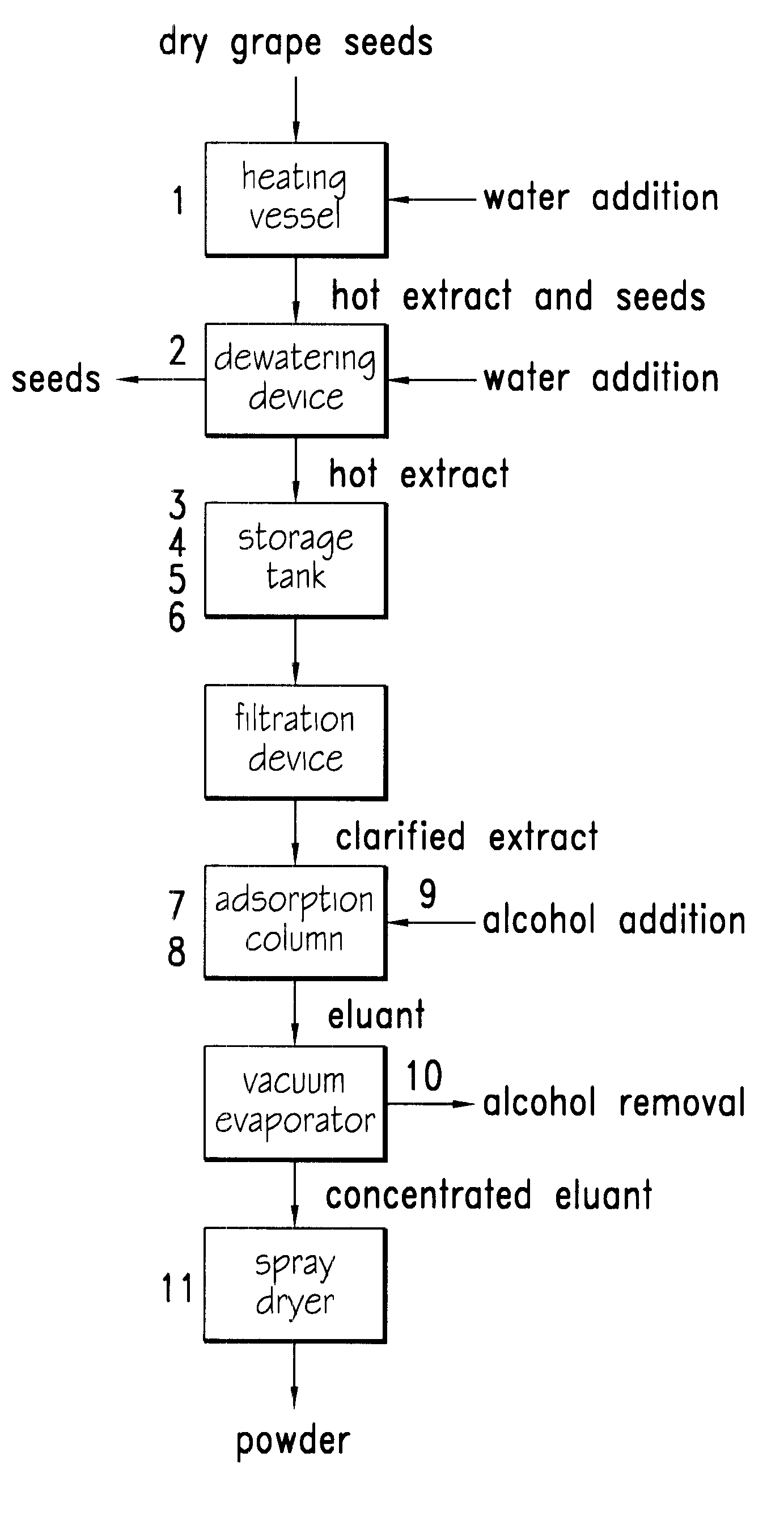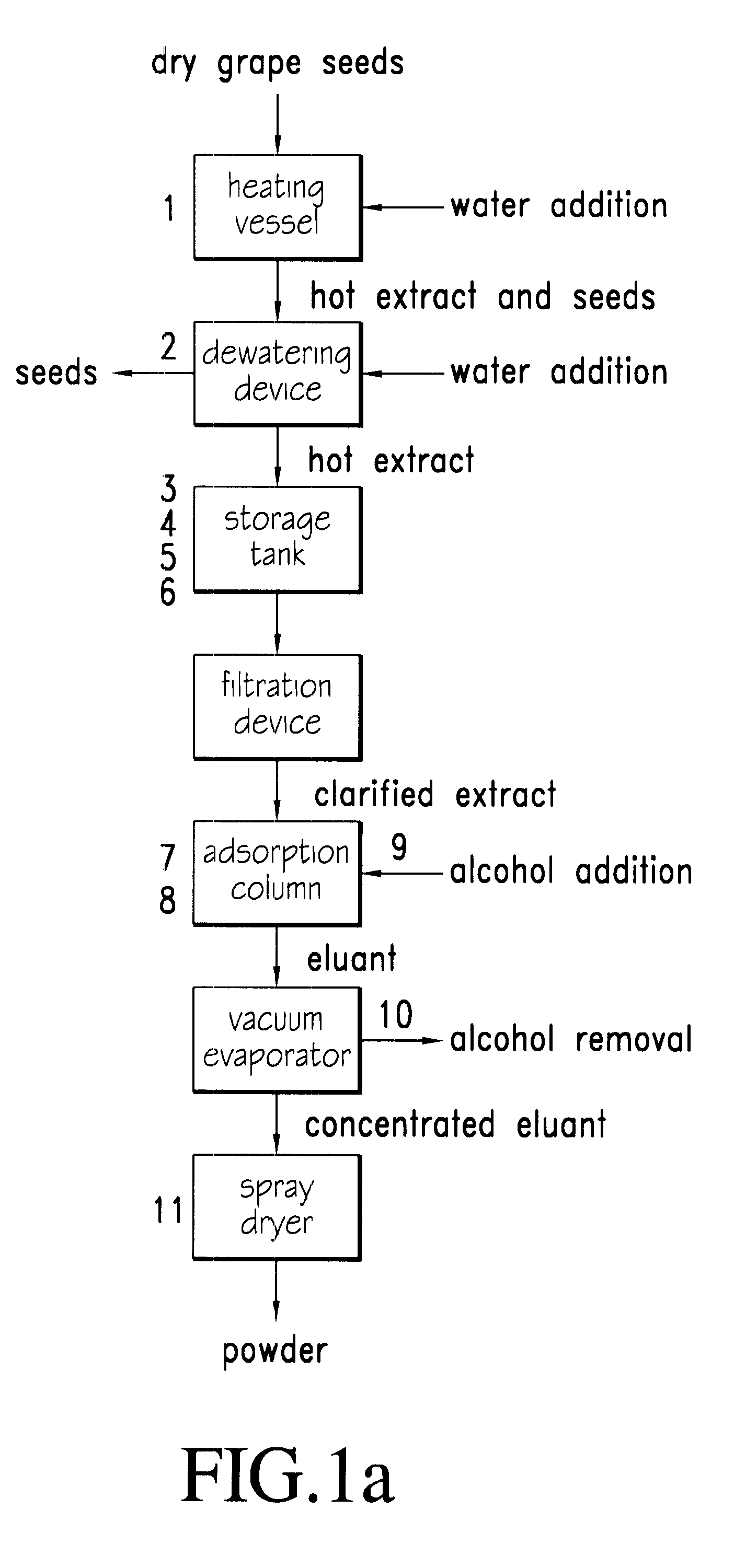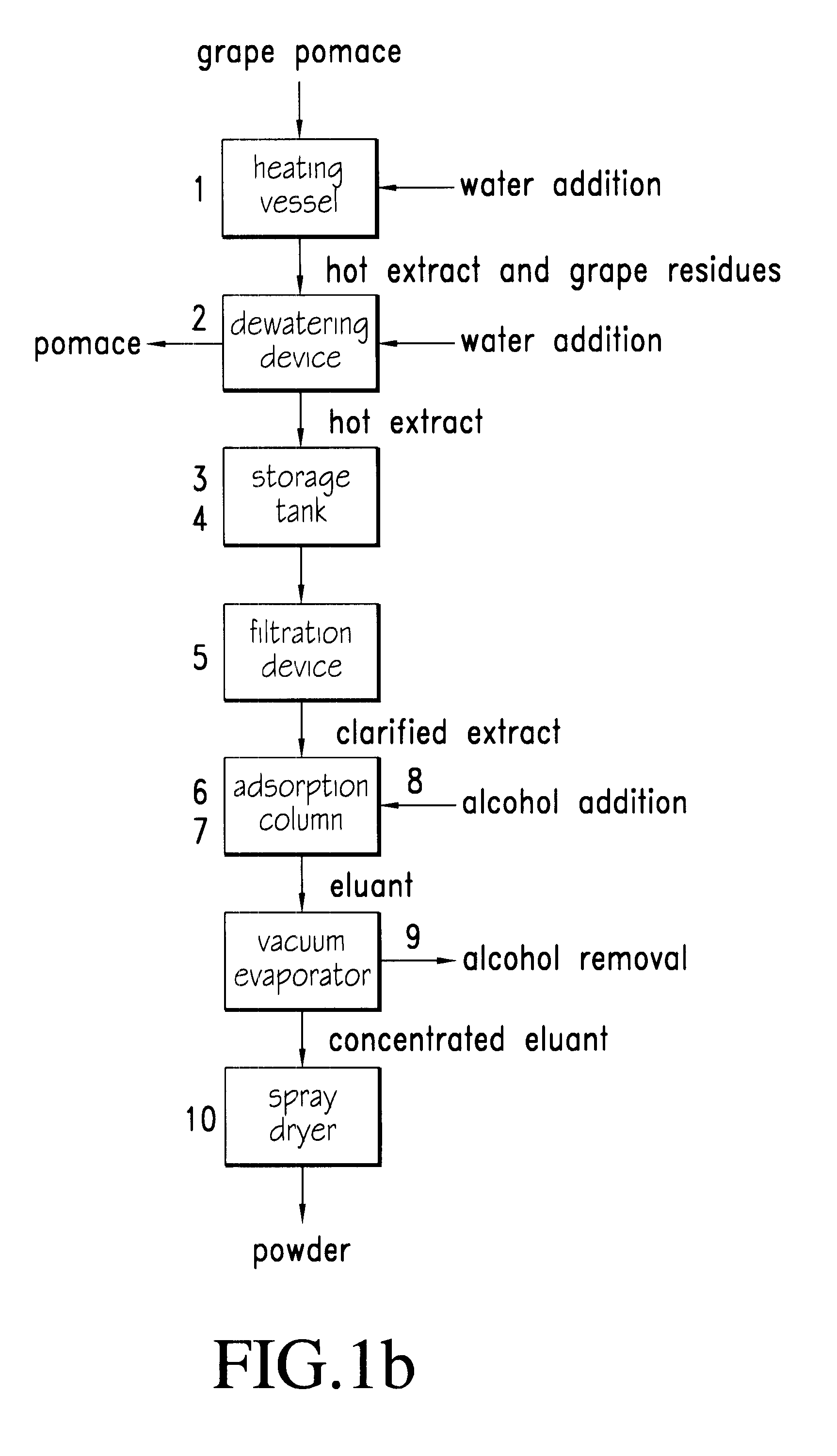Process for extraction, purification and enrichment of polyphenolic substances from whole grapes, grape seeds and grape pomace
a polyphenol and grape pomace technology, applied in the field of process for purifying and enriching polyphenols from whole grapes, grape seeds and grape pomace, can solve the problems of limited practical utility of the multi-step solvent dependent process of the '594 patent, uncommercially practicable or safe methods, etc., to achieve maximum concentration and purification
- Summary
- Abstract
- Description
- Claims
- Application Information
AI Technical Summary
Benefits of technology
Problems solved by technology
Method used
Image
Examples
example 2
Grape Seed Extraction and Purification--Dual pH Treatment
In a manner similar to that described in Example 1, 7,100 lbs. of dried red grape seeds are extracted in about 2,000 gallons of boiling water for two hours. After de-watering and rinsing the seeds, 2,000 gallons of crude extract are collected. The composition of this extract is determined to be as follows:
The extract is cooled to 100-120.degree. F. and treated overnight with pectolytic enzymes. Next, the pH of the extract is reduced to 2.5 followed by chilling to 40.degree. F. After three weeks, the pH is increased to 4.5 with potassium hydroxide which causes a rapid flocculation and sedimentation of the insoluble and colloidal substances. The extract is decanted and filtered, adsorbed on an XAD-7HP.RTM. resin as previously described and processed into a spray dried grape seed extract powder. Analyses of this powder confirmed a high degree of purification compared to the raw extract. The weight of powder recovered is 2.29 lbs....
example 3
Grape Pomace Extraction and Purification
One part by weight Zinfandel grape pomace (skins and seeds) are combined with five parts potable water. This mixture is stirred vigorously for one hour at 170.degree. F. after which the liquid is drained and the pomace pressed. Extract streams are combined and chilled to 40.degree. F. A pectolytic enzyme is added and sufficient time is allowed for depectinization to reach completion. After the extract has settled and become clear it is decanted and filtered through diatomaceous earth.
Two liters of filtered extract is adsorbed on a 100 mL XAD-7HP.RTM. adsorbent resin column at the rate of 2.5 bed volumes per hour, rinsed with 100 mL of water and eluted with one bed volume of 75% ethanol. 112 mL of eluant are collected. The eluant is stripped of alcohol under vacuum and dried overnight in a vacuum oven. 5.89 grams of powder are collected. The composition of extract, eluant and powder appear in the following table:
example 4
Grape Seed Extraction and Purification--Dual pH Treatment
1200 grams of dried Rubired seeds is extracted with 2.88 liters of boiling water in a manner as described in Example 1. After rinsing the seeds with 0.50 L of water three times the extract is cooled to 114.degree. F. and treated with 200 ppm pectolytic enzyme for two hours. Next, sulfuric acid is added to reduce the pH to 2.0. The acidified extract is held at room temperature for one hour followed by addition of potassium hydroxide to raise the pH to 4.5. Immediately upon the final pH adjustment a heavy flocculation is seen to form which rapidly sediments, leaving a clear supernatant. The phenolic composition of the supernatant is as follows:
The supernatant is then allowed to settle for 48 hours, decanted and filtered. One liter of the filtered extract is adsorbed on a 100 mL column of adsorbent resin XAD-7HP.RTM. at the rate of 2.5 bed volumes per hour, rinsed with 100 mL of water and eluted with 75% ethanol in the manner pre...
PUM
 Login to View More
Login to View More Abstract
Description
Claims
Application Information
 Login to View More
Login to View More - R&D
- Intellectual Property
- Life Sciences
- Materials
- Tech Scout
- Unparalleled Data Quality
- Higher Quality Content
- 60% Fewer Hallucinations
Browse by: Latest US Patents, China's latest patents, Technical Efficacy Thesaurus, Application Domain, Technology Topic, Popular Technical Reports.
© 2025 PatSnap. All rights reserved.Legal|Privacy policy|Modern Slavery Act Transparency Statement|Sitemap|About US| Contact US: help@patsnap.com



